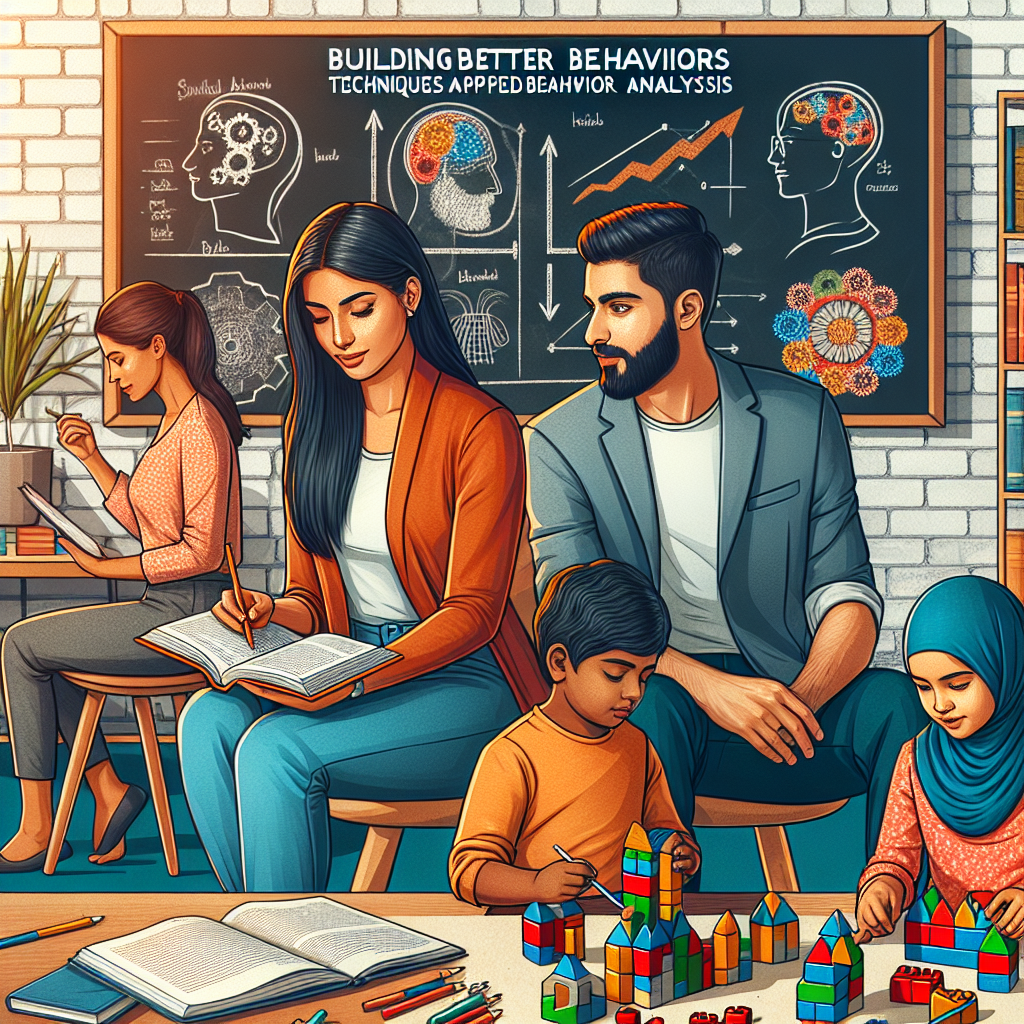
Introduction: Unlocking the Path to Positive Change
Imagine a world where your goals are easily achievable, behaviors align with your values, and positive changes manifest almost effortlessly. Welcome to the realm of Applied Behavior Analysis (ABA), a science that has transformed countless lives by utilizing proven techniques to foster better behaviors. Understanding the principles of ABA allows us to cultivate environments that support positive behavioral shifts, whether for ourselves, our children, or those we care about. This guide explores the core of Building Better Behaviors: Techniques from Applied Behavior Analysis, offering actionable insights and compelling case studies that demonstrate the power of these techniques in real-world scenarios.
Understanding Applied Behavior Analysis
What is ABA?
Applied Behavior Analysis, or ABA, is the empirical study of how behavior operates in different environments. Rooted in behavioral psychology, ABA focuses on modifying observable behaviors, making it an incredibly useful tool in education, therapy, and everyday life.
The Core Principles of ABA
Before diving into the techniques, it’s essential to understand some foundational principles:
- Reinforcement: Positive or negative reinforcement strengthens a behavior.
- Antecedents: Events that occur before a behavior that can trigger it.
- Consequences: Outcomes that follow a behavior ultimately influence whether it will be repeated.
ABA meticulously analyzes these mechanisms to build better behaviors systematically.
Building Better Behaviors: Techniques from Applied Behavior Analysis
1. Positive Reinforcement
One of the most potent strategies in ABA is positive reinforcement, which involves providing a reward after a desired behavior occurs. This reward increases the likelihood of that behavior being repeated.
Case Study: Improving Homework Completion
A fifth-grade teacher implemented a positive reinforcement strategy in her classroom. She established a point system where students earned points for completing homework on time. At the end of the week, points could be exchanged for privileges like extra recess or a homework pass.
- Analysis: The teacher observed a notable increase in homework completion rates within just one month. This highlight illustrates how Building Better Behaviors: Techniques from Applied Behavior Analysis can foster a more productive learning environment.
2. Token Systems
Token systems are structured reinforcement strategies where individuals earn tokens for desired behaviors that can later be exchanged for a more substantial reward.
Case Study: Classroom Management
A special education teacher used a token economy system to encourage participation among students with diverse needs. Tokens were awarded for raising hands and engaging in group activities.
- Analysis: Data collected showed a significant increase in student interaction. This case exemplifies how structured systems of Building Better Behaviors: Techniques from Applied Behavior Analysis can yield measurable success.
3. Task Analysis
Task analysis breaks down complex behaviors into smaller, manageable steps, making tasks less daunting.
Case Study: Teaching Daily Living Skills
A caregiver working with an individual with autism employed task analysis to teach the skill of brushing teeth. She listed the steps: 1) Gather materials, 2) Wet the toothbrush, 3) Apply toothpaste, etc.
- Analysis: By simplifying the process, this caregiver saw marked improvement in the individual’s ability to complete the task independently, emphasizing the effectiveness of breaking down complex behaviors, a crucial aspect of Building Better Behaviors: Techniques from Applied Behavior Analysis.
4. Shaping
Shaping involves reinforcing successive approximations toward a desired behavior. This technique is particularly useful for behaviors that are complex or not yet present.
Case Study: Enhancing Communication Skills
A speech therapist used shaping to assist a child with limited verbal abilities to enhance their communication skills. She started by reinforcing any sound the child made, then gradually rewarded closer approximations to actual words.
- Analysis: Over a few months, the child progressed significantly, illustrating how shaping can be a key player in Building Better Behaviors: Techniques from Applied Behavior Analysis.
5. Modeling
Modeling involves demonstrating a desired behavior so that individuals can imitate it. This technique thrives in teaching social skills.
Case Study: Social Skills Training
In a social skills group for adolescents, leaders modeled appropriate conversation starters and responses. Participants practiced these techniques in real-time.
- Analysis: The subsequent increase in the participants’ comfort and ability to engage socially showcases modeling as a compelling method in Building Better Behaviors: Techniques from Applied Behavior Analysis.
Visualizing the Process: Tables and Charts
Table 1: Comparison of ABA Techniques
| Technique | Description | Ideal for |
|---|---|---|
| Positive Reinforcement | Rewarding a desired behavior | Homework completion, classroom behavior |
| Token Systems | Earning tokens for behaviors | Classroom management, incentive-based settings |
| Task Analysis | Breaking tasks into steps | Daily living skills, complex behaviors |
| Shaping | Reinforcing progress toward a goal | Communication skills, new behaviors |
| Modeling | Demonstrating desired behaviors | Social skills training, interpersonal skills |
Actionable Takeaways
-
Identify Target Behaviors: Determine which specific behaviors you want to change or promote, using ABA techniques to guide your strategy.
-
Utilize Reinforcement: Always remember that reinforcement can significantly influence behavior when implemented correctly.
-
Adapt Techniques: Not every method works for every individual. Flexible adaptation is crucial for the success of Building Better Behaviors: Techniques from Applied Behavior Analysis.
-
Be Consistent: Consistency in application strengthens the likelihood of desired behavior and enhances stability in the learning environment.
- Celebrate Small Wins: Acknowledge and reward even the small steps towards behavior change, maintaining motivation.
Conclusion: Your Pathway to Transformation
Building Better Behaviors: Techniques from Applied Behavior Analysis is not just a therapeutic approach; it is a way to manifest positive changes in every facet of life. Whether you’re a teacher, therapist, caregiver, or someone eager for personal growth, the principles of ABA offer a roadmap to success. The techniques shared here can guide you in creating environments that foster growth, encourage learning, and promote healthy behavioral changes. As you embark on this journey, remember: every step counts, and each behavior is just a reflection of the bigger picture!
FAQs
1. What is the primary benefit of ABA?
The primary benefit of ABA is its structured methodology for behavior modification through measurable techniques, making it effective for various applications, including education and therapy.
2. Are ABA techniques only for individuals with disabilities?
No, ABA techniques are versatile and can be applied by anyone looking to alter their behaviors or build new habits, irrespective of disabilities.
3. Is positive reinforcement the only method used in ABA?
While positive reinforcement is a cornerstone of ABA, there are various other techniques, such as shaping, modeling, and task analysis, each tailored to specific needs.
4. How long does it take to see results from ABA techniques?
Results can vary widely based on individual circumstances and the specific behaviors targeted. Some changes can be observed in weeks, while others may take months.
5. Can ABA be used in everyday life?
Absolutely! ABA techniques can be integrated into daily routines, whether at home, work, or in educational settings, making them widely applicable for improving behaviors.
By leveraging the insights provided in this article, you can start to implement effective strategies for Building Better Behaviors: Techniques from Applied Behavior Analysis in your life and the lives of those around you. Remember, transformation begins with understanding and applying these proven methods!














